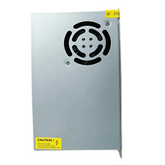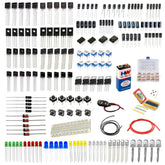DUAL POWER SUPPLY: CONSTRUCTION AND WORKING
Summary
Looking for a more stable and reliable power supply for your electronic circuits? Look no further than the dual-channel power supply. This blog explains what a dual-channel power supply is, why you might need one, the different types available, required components, and the construction and working of this type of power supply. Additionally, the blog highlights the advantages of using a dual-channel power supply.
Introduction:
A lot of electronic components today require a DC power supply, and A dual channel power supply is a type of power supply that provides two independent voltage outputs, known as channels. These channels can provide different voltages and are often used to power different types of circuits or devices.
What is Dual Channel Power Supply:
A power supply that offers two separate voltage outputs, referred to as channels, is called a dual-channel power supply. These channels can provide different voltages and are often used to power different types of circuits or devices. Generally, dual power supply supplies positive, negative, and ground as the supply output. This can be used for various functions as per the requirements of the electronic components which are intended to use.

Get the Owon SPE3102 DC Power Supply for accurate voltage control.
Why do we need Dual Channel Power Supply:
Dual channel power supplies are often used in applications where multiple voltage levels are required. Dual-channel power supplies allow circuits or devices with varying voltage requirements to be powered without requiring multiple power sources. This is advantageous in scenarios where limited space or cost considerations make it impractical to use multiple single-channel power supplies, and a single dual-channel power supply is a more feasible option.
Additionally, Dual channel power supply can also help in isolating different circuits from each other, reducing the chances of interference and providing better protection. It also allows for more flexibility in powering different types of circuits or devices with different voltage level requirements.
Types of Dual Channel Power Supply (with diagrams):
There are several types of dual-channel power supplies, each with its unique properties. Some common types include:
- 5V Dual power supply:

- 12V Dual power supply:

- 15V Dual power supply

Each of the above types of dual channel power is used depending on the specific application and requirements. Therefore, it's important to carefully consider the application and requirements when choosing a dual-channel power supply.
Components required:
- Step down Transformer
- Bridge Rectifier (using IN4007 Diode)
- Capacitors
- The voltage regulator 7805, 7812, 7815, 7905, 7912, 7915.
- Connecting wires
Construction:
The construction of a dual-channel power supply circuit is relatively simple. In the circuit diagram, a step-down transformer is utilized to decrease the 230V AC voltage to a lower AC voltage, which is subsequently fed into the bridge rectifier. After this rectification circuit, we have a filter circuit to clear out the ripples, for that purpose, a capacitor is connected in parallel to eliminate any AC signal and pass on the DC signals alone. Finally, the DC voltage is given to its respective voltage regulator to get the required constant voltage at the output terminal. We get positive, negative, and Ground voltages available at the output terminals.
Working:
The working of a dual-channel power supply is based on providing two independent voltage outputs, known as channels. The working of the circuit is simple, the main power source is taken from the 230V AC and stepped down to the required voltage, the step-down voltage is also an AC thus it is converted into DC voltage using Bridge rectifier, and the signal after the bridge rectifier contains some noise (called as ripples). the noise is filtered out using capacitive filters. Filtering out the noise, the voltage is given to its respective voltage regulator circuit to ensure the regulated voltage is being supplied at the output terminal.
Advantages of Dual Channel Power Supply:
Multiple Voltage Levels: By providing several voltage levels, dual-channel power supplies can power circuits or devices with various voltage level requirements.
Improved Efficiency: Dual-channel power supplies can be more efficient than multiple single-channel power supplies, which can save energy and reduce costs.
Cost Savings: Using a single dual-channel power supply instead of multiple single-channel power supplies can save costs by eliminating the need for multiple power supplies.
Space Savings: Dual channel power supplies can save space by eliminating the need for multiple power supplies in a limited space.
Flexibility: Dual channel power supplies can provide more flexibility in powering different types of circuits or devices with different voltage level requirements.
Redundancy: Dual channel power supplies can provide redundancy, particularly in critical systems such as medical equipment, industrial automation, and telecommunications where a power outage can have severe consequences.
Applications of Dual Channel Power Supply Circuit:
Audio equipment: Dual channel power supplies can provide multiple voltage levels for powering different types of audio circuits, such as preamplifiers, power amplifiers, and equalizers.
Electronic test equipment: Dual channel power supplies are used in electronic test equipment to provide different voltage levels for powering different types of electronic devices and circuits.
Microprocessors and embedded systems: Dual channel power supplies are used in microprocessors and embedded systems to provide different voltage levels for powering different types of digital devices.
Telecommunications: Dual channel power supplies are used in telecommunications systems to provide redundant power sources, ensuring that the load remains operational even if one power source fails.
Industrial automation: Dual channel power supplies are used in industrial automation systems to provide redundant power sources and to power different types of equipment and devices.
Conclusion:
A dual-channel power supply is a type of power supply that provides two independent voltage outputs, known as channels. These are used for a variety of applications and save costs for development and prototyping.
If you appreciate our work don't forget to share this post and leave your opinion in the comment box.
Please do check out other blog posts about Popular electronics
Make sure you check out our wide range of products and collections (we offer some exciting deals!)









